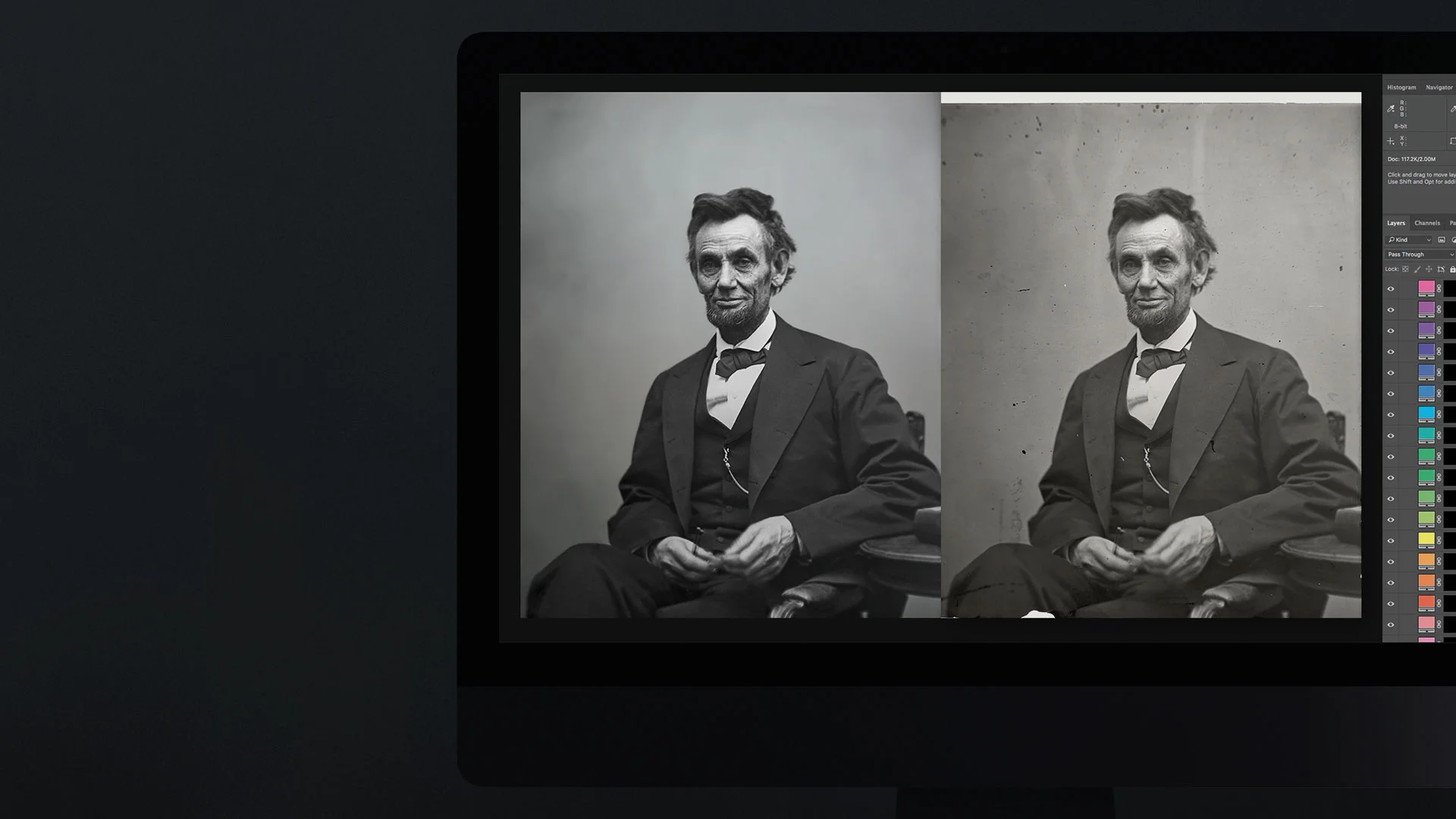The Process
Colorization is a laborious process, painting on layer upon layer of color onto an original black and white picture, and making it realistic enough to make you believe you are looking at a genuine color photograph. Some images can have over a thousand separate layers of color to make sure every single detail is accounted for.
We also painstakingly restore any damage to the photograph, and conduct as much research as we can in order to obtain as many accurate color references as possible. Here, the entire process is broken down into six stages, which is typical of many of the photographs that are rendered into color •






